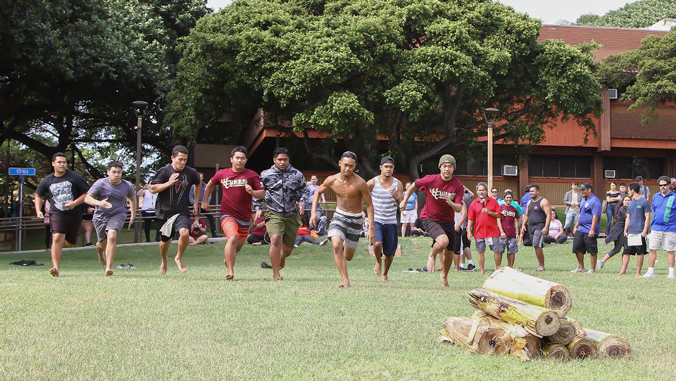
A conch shell, blown in the early morning of January 19 signaled the beginning of Makahiki at Kapiʻolani Community College.
Makahiki is a sacred time for Native Hawaiians, a time of peace and cessation of warfare. It is also a time to appreciate all that has been harvested and to share in the gathered abundance. People also come together to learn collective wisdom from shared stories.
After the conch shells sounded, two solemn processions, honoring hundreds of years of tradition and protocol, made their way around the Great Lawn. The first procession of men in malo, (traditional Hawaiian loincloth), representing the Hawaiian fertility god Lono, marched clockwise around the great lawn. A second group representing Hawaiian chiefs brought hoʻokupu, or offerings, that they grew or harvested from the land and ocean and offered these to Lono. After all hoʻokupu were presented, there were chants by the priest, or kahuna.
A sports competition marked the second phase of Makahiki. Students, faculty, staff and administrators were challenged in traditional games of strength and skill. The day ended with a feast of traditional Hawaiian food, emphasizing the importance of healthy eating.
ʻŌlohe ʻUmi Kai reflected that “the important feature of Makahiki is that it incorporates many facets of traditional culture and learning.” A master teacher himself, ʻUmi cited the value of carving to create images and implements, the appreciation of language to recite the oli and pule (song and prayer), star knowledge to know when the appropriate times are to start and finish, physical fitness to be able to complete in games, protocol knowledge to ensure proper ceremonial correctness and patience to ensure everything runs properly.
The event was coordinated by Kapiʻolani CC Title III Project Director Kapulani Landgraf.
—By Louise Yamamoto


